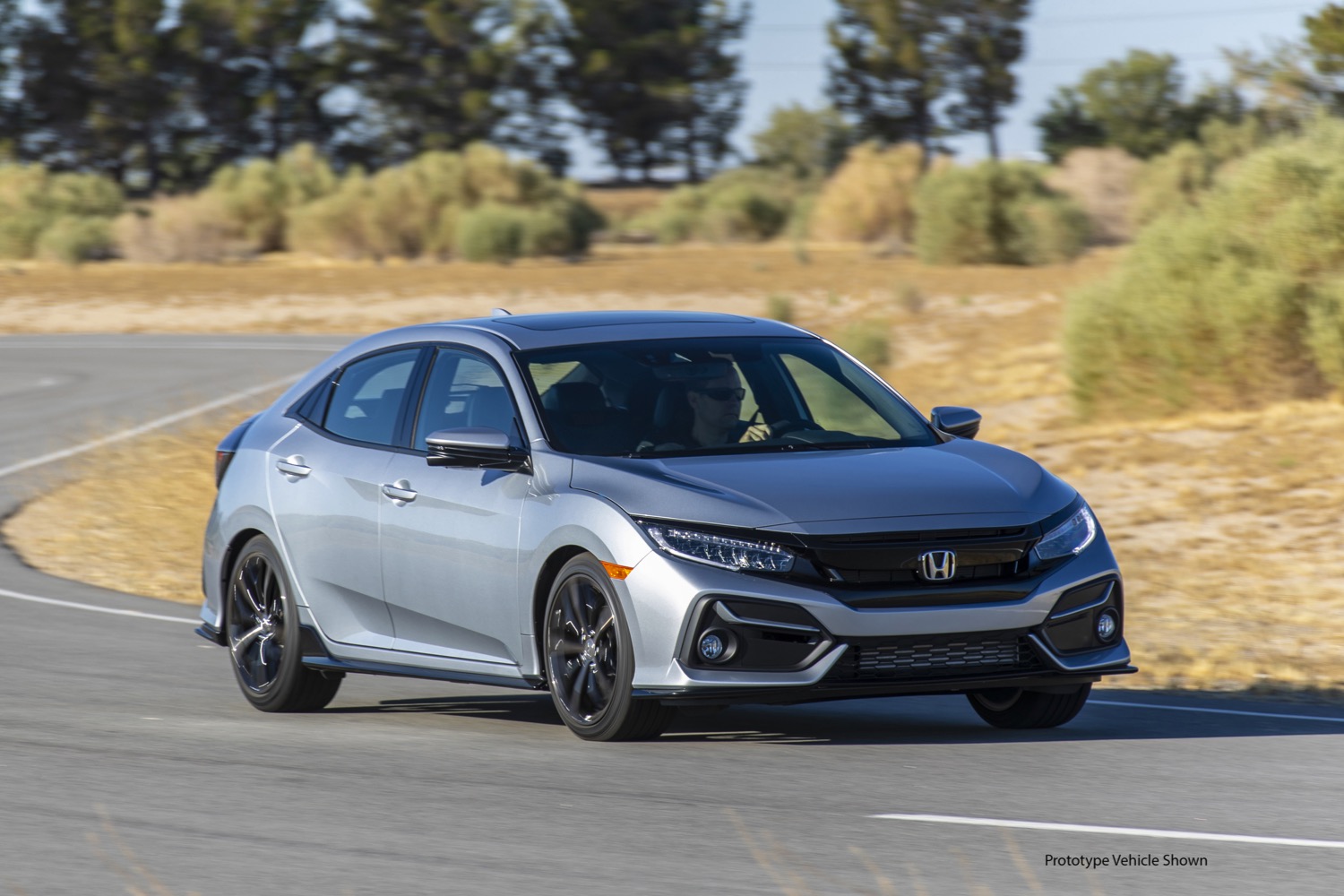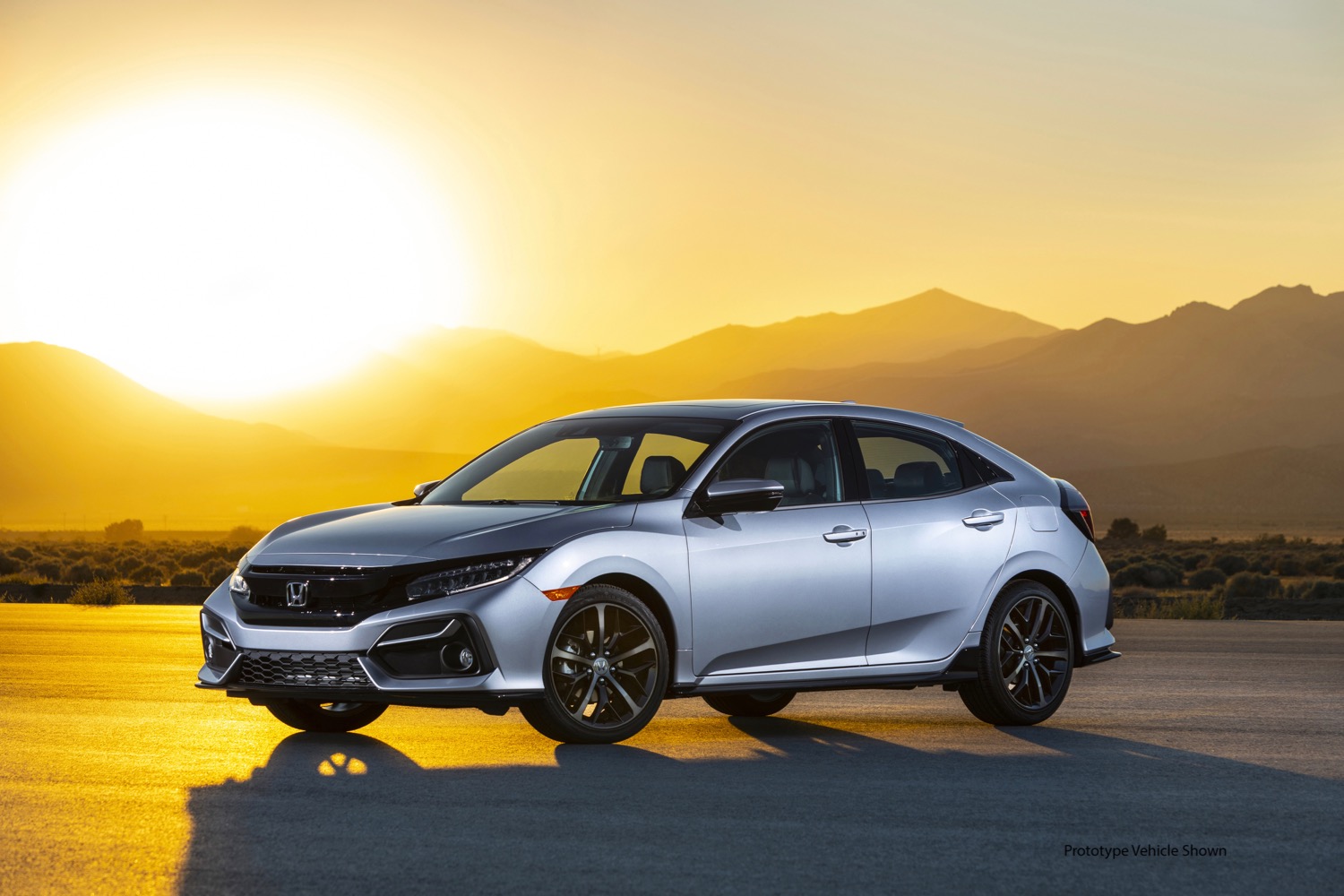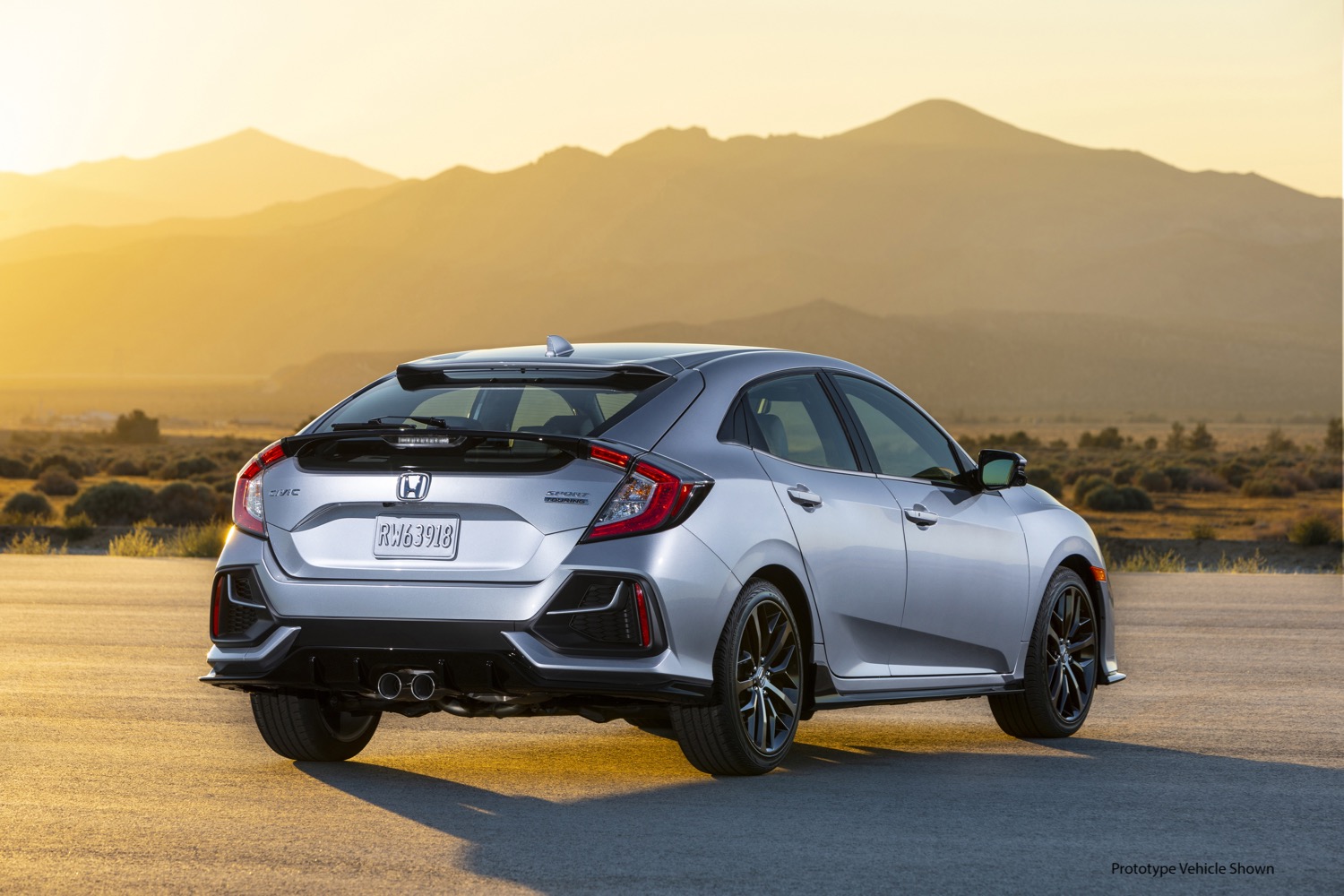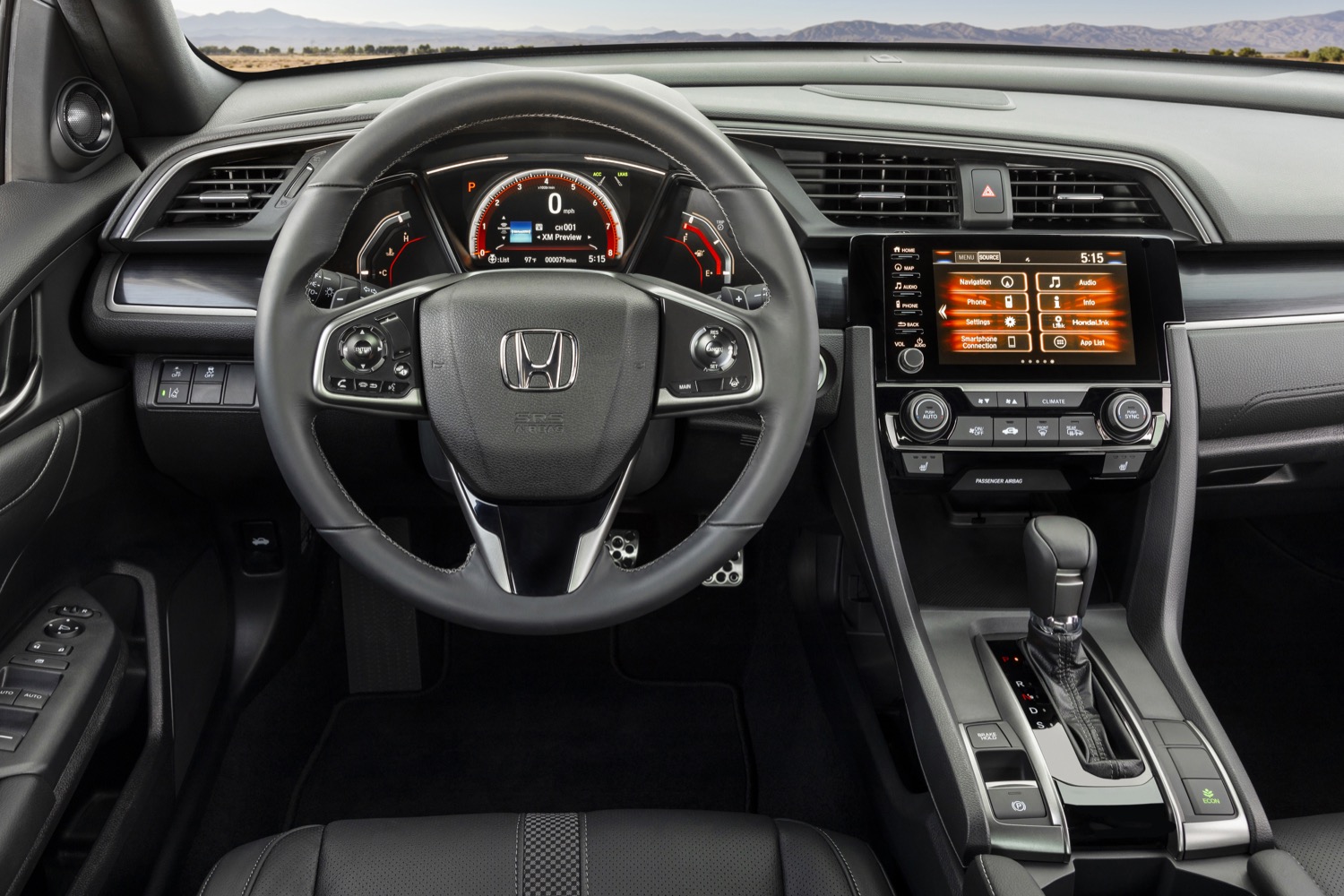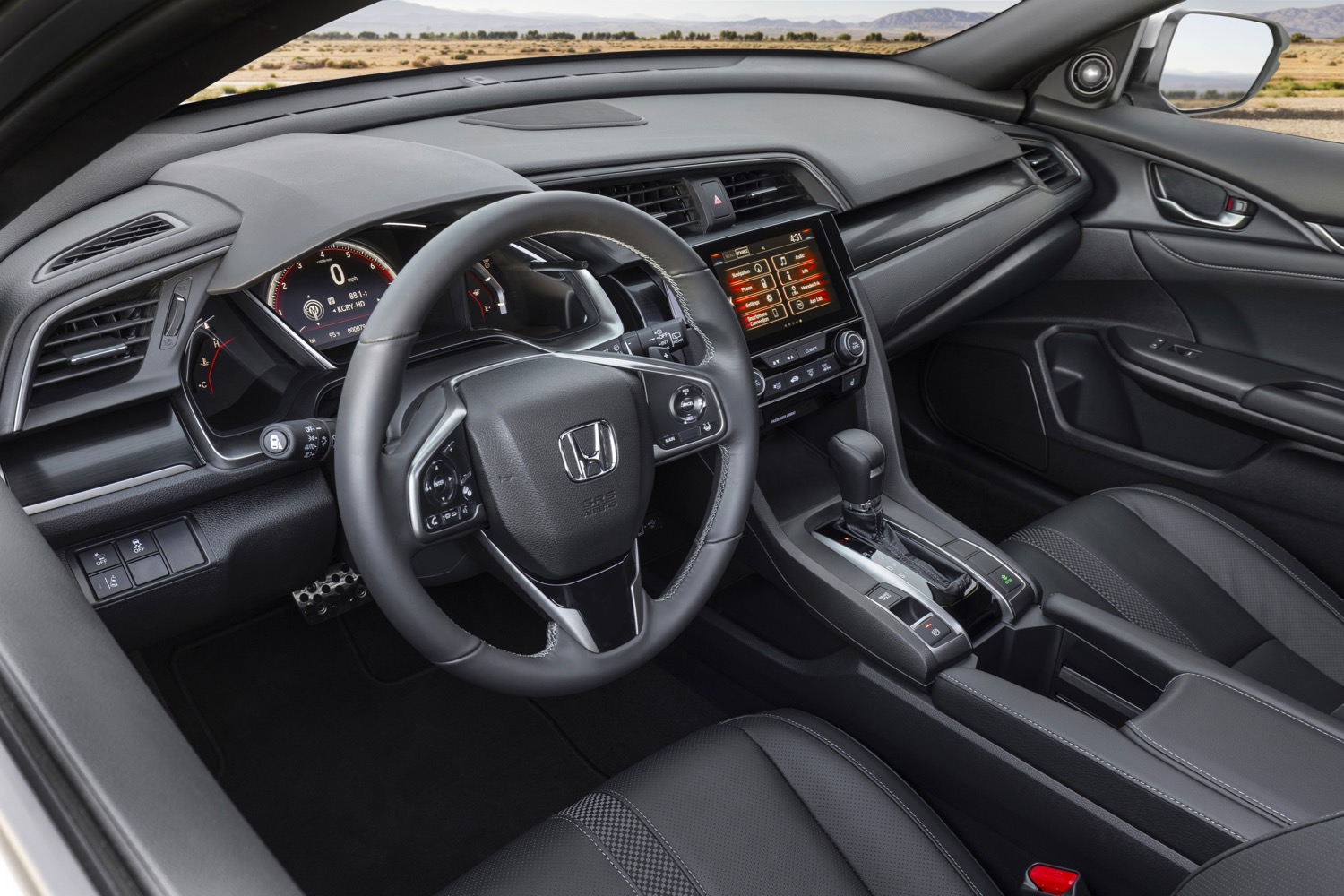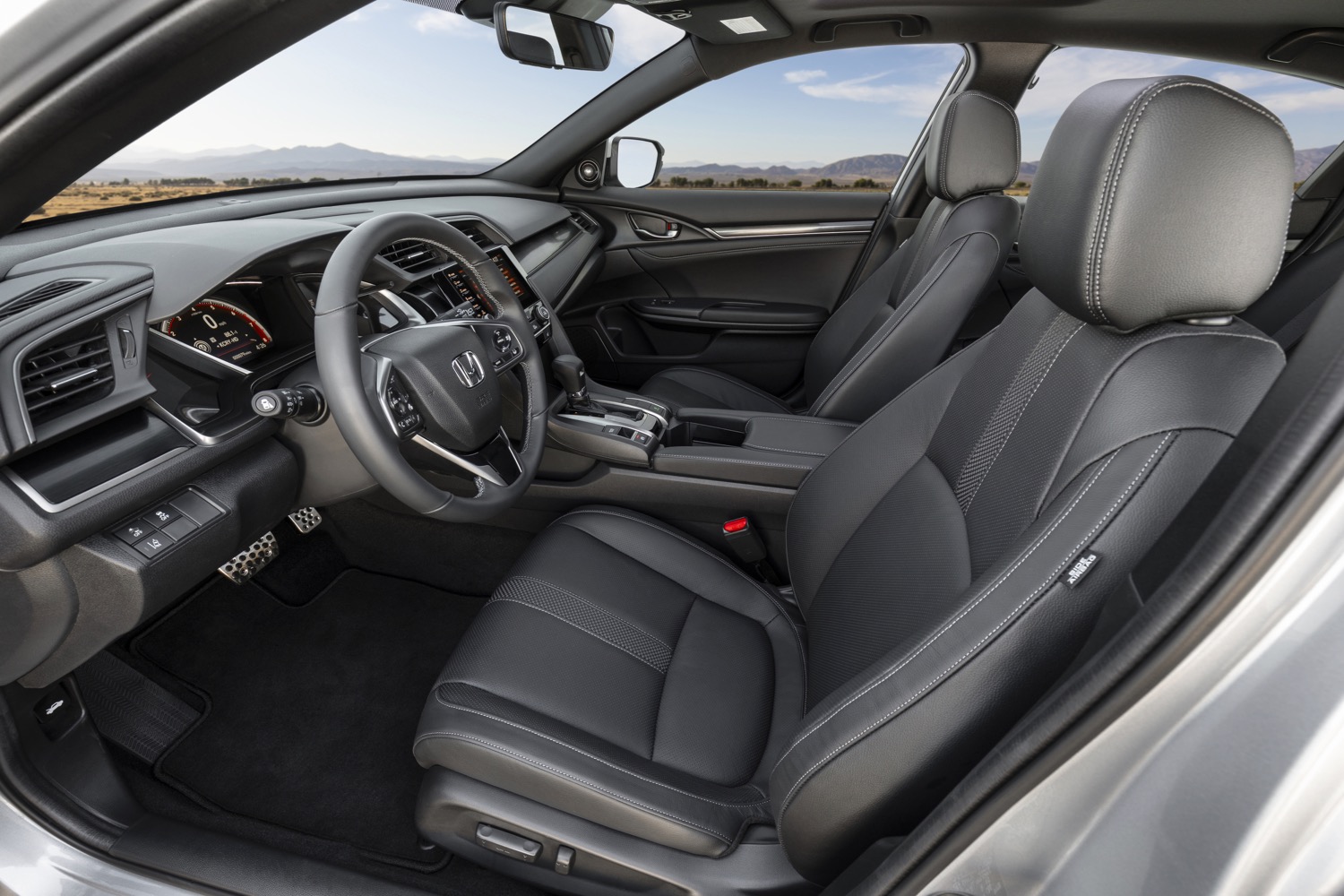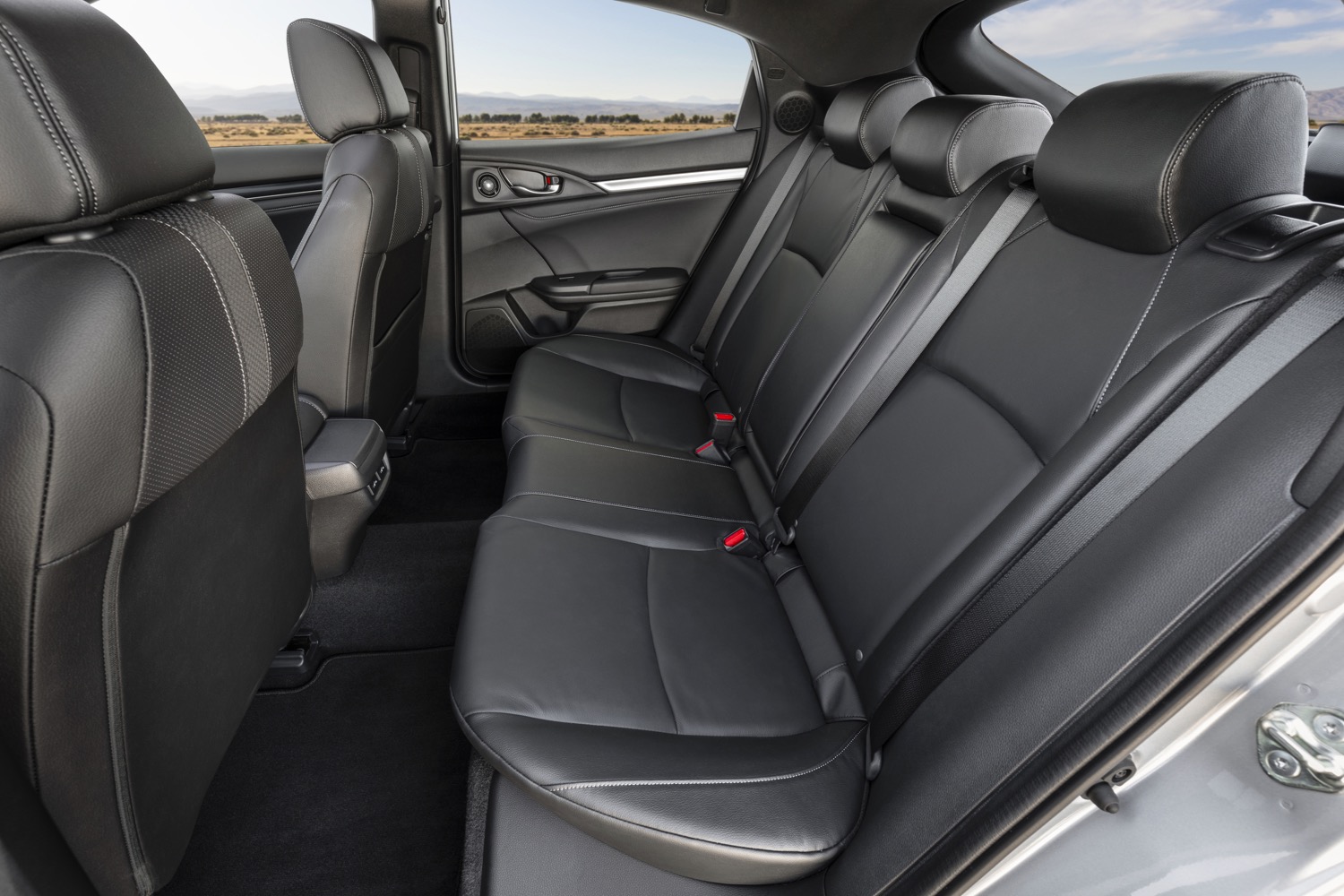Following updates to the Honda Civic sedan and coupe for the 2019 model year, the Civic hatchback is getting refreshed. Honda made some minor styling changes, and expanded availability of some notable tech features. Bucking the industry trend, Honda also added the six-speed manual transmission to a second trim level on the Civic hatchback.
The current-generation Civic isn’t exactly a wallflower, so Honda didn’t need to make major changes to the hatchback’s exterior styling to keep it fresh. The grille is a bit different, and the headlights get a “blackout” treatment that looks like something the aftermarket would normally apply. Sport Touring models get LED headlights with wider and longer beams, according to Honda, while all trim levels get additional sound insulation. The lower part of the front fascia has also sprouted some secondary air inlets, which likely aren’t functional. Whatever your opinion on the Civic hatchback’s styling was before, these tweaks likely won’t change it.
If you wanted a Civic hatchback with a manual transmission, the Sport trim level was previously your only choice. For 2020, Honda added the stick shift to the top Sport Touring trim level as well. Both trim levels are also available with the continuously variable transmission (CVT) that is standard on all other Civic hatchback trim levels.
Honda did not mention any other mechanical changes, meaning the Civic hatchback will continue to rely on a 1.5-liter turbocharged four-cylinder engine. The engine makes 174 horsepower and 162 pound-feet of torque in standard form, but gets a power bump in Sport and Sport Touring models. It makes 180 hp in those models, as well as 177 lb-ft with the manual transmission (torque output is unchanged with the CVT). No word yet on whether the sporty Civic Type R will return for 2020.
The Civic hatchback also got some notable tech updates for the 2019 model year that carry over to 2020. The updated 7.0-inch touchscreen infotainment system that launched in 2019 is now standard on the Sport trim level (it was previously available only on EX models and above). The system features more analog controls (including a volume knob), making it easier to use. Apple CarPlay and Android Auto are standard on Sport and higher trim levels as well.
The Honda Sensing bundle of driver aids added for 2019 carries over as well. It includes standard adaptive cruise control, lane keep assist, lane departure warning, autonomous emergency braking, and road departure mitigation. EX models and above also get LaneWatch, which uses a camera mounted on the passenger’s side rearview mirror to show what’s in the driver’s blind spot. However, Honda plans to discontinue the feature soon in favor of cheaper blind-spot monitoring systems that use flashing lights in place of the camera view.
Pricing for the 2020 Honda Civic hatchback starts at $22,580 for a base LX model. Next up is the Sport, which starts at $23,680 with the manual transmission, and $24,480 with the CVT. The midrange EX and EX-L start at $25,080 and $26,280, respectively. Finally, the top Sport Touring starts at $28,980 with the six-speed manual, and $29,780 with the CVT. All prices include a mandatory $930 destination charge.
Editors' Recommendations
- The best hatchbacks
- 2020 Toyota Camry vs. 2020 Honda Accord
- 2020 Honda CR-V Hybrid offers 38 mpg combined for $28,870
- The 2020 Honda Civic sedan and coupe arrive tomorrow starting at $20,680
- 2020 Honda Civic Si coupe and sedan get artificially enhanced engine sounds
